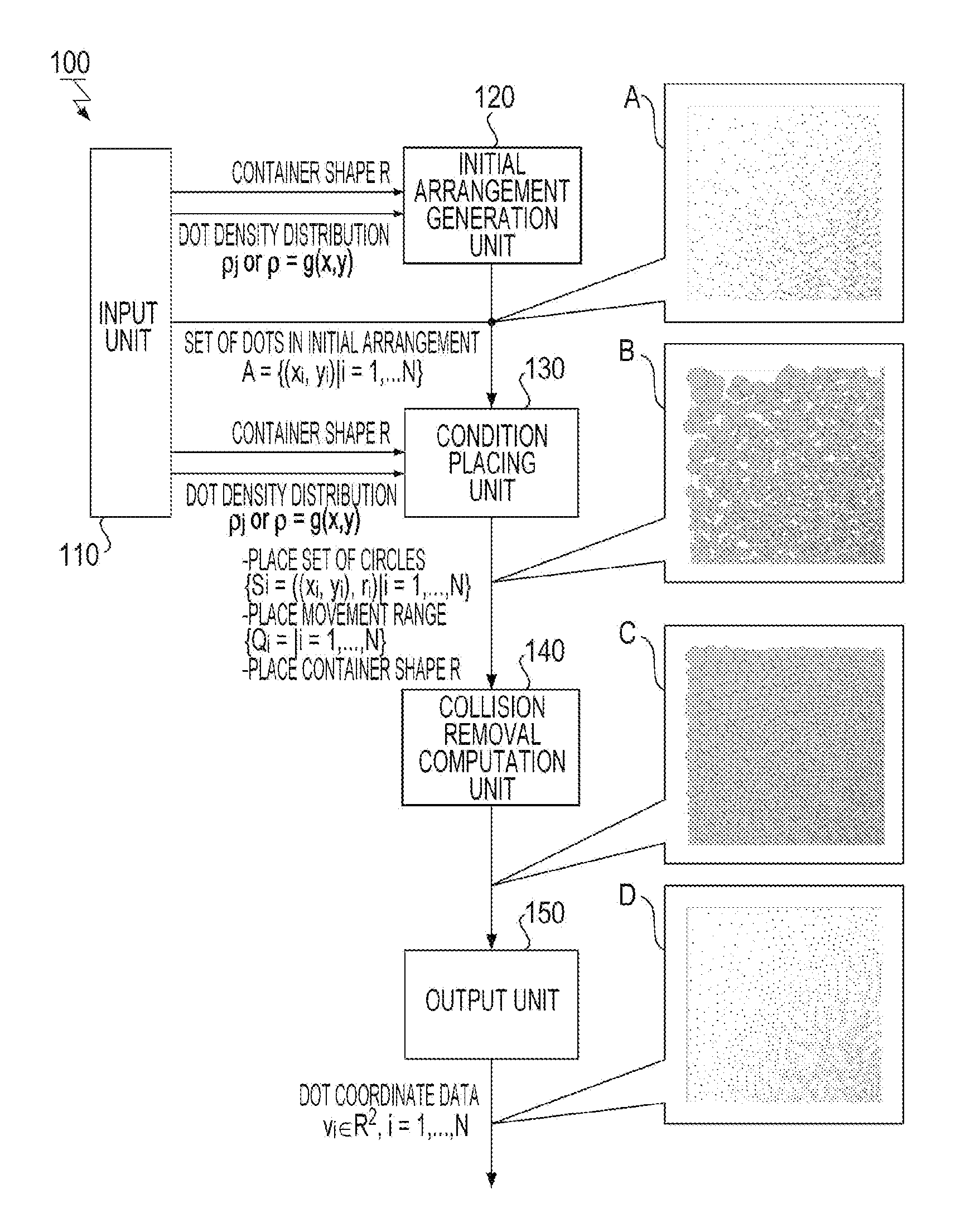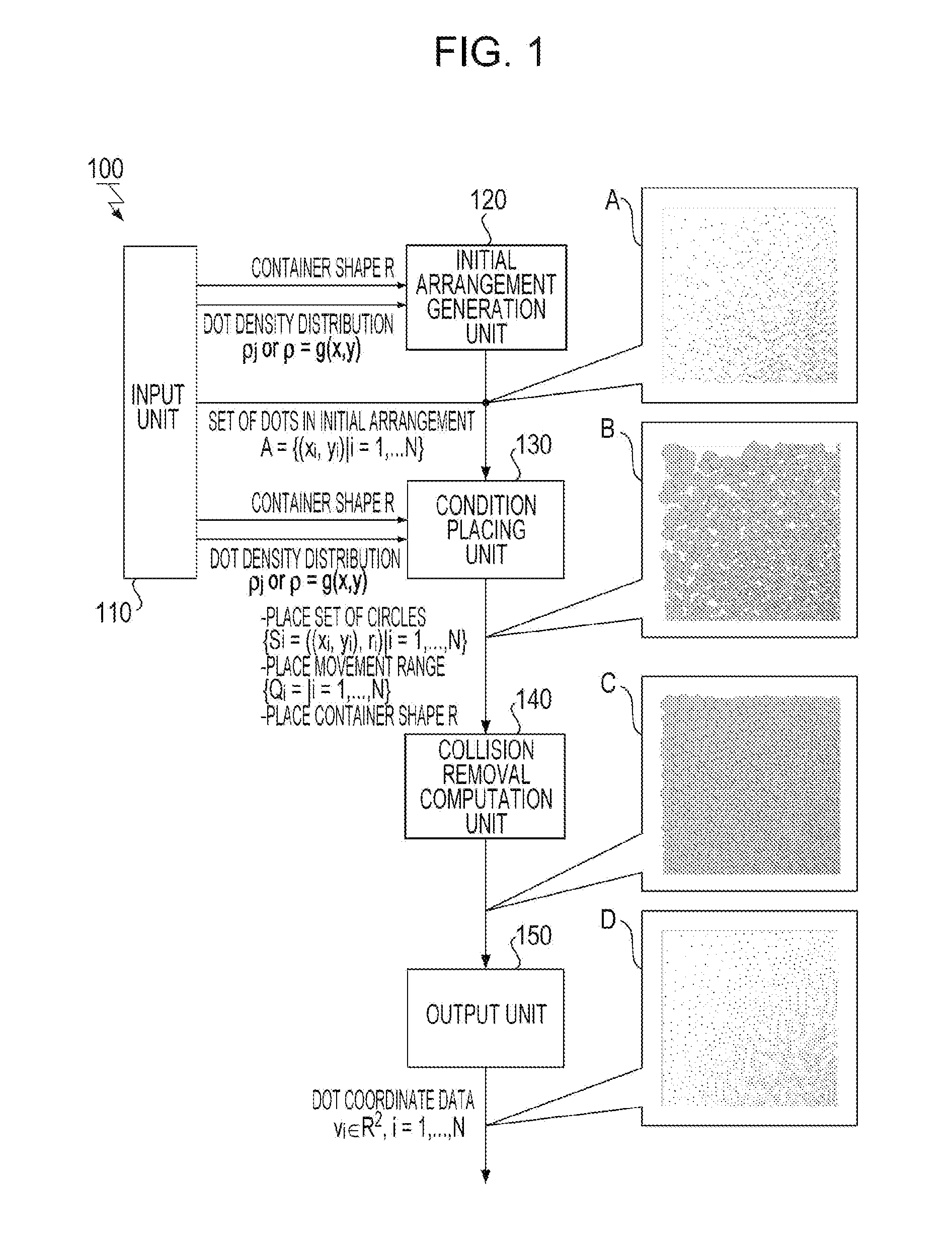Information processing apparatus, calculation method, program, and storage medium
a technology of information processing and calculation method, applied in the field of information processing apparatus, calculation method, program and storage medium, can solve the problems of unsatisfactory techniques, unsatisfactory techniques, and inability to calculate in the above-described known techniques, so as to facilitate the formation of periodical dot patterns, reduce moiré, and enhance the regularity of dot patterns
- Summary
- Abstract
- Description
- Claims
- Application Information
AI Technical Summary
Benefits of technology
Problems solved by technology
Method used
Image
Examples
experimental examples
2. Experimental Examples
[0079]A design condition is that the movement range Qi was a square having a side of 4ri where ri is the radius of a circle, the constant a in the above Expression (7) for determining the radius ri is π / √3, and the dot diameter 2ro is 46 μm.
2.1. Experimental Example 1 (Implementation)
[0080]A design condition is that, in addition, the container R is a square region having a side of 3.0 cm. The used filling factor distribution data is one in which the filling factor in the central portion is 60%, the filling factor in the outer portion is 0%, and a mean gradient is 40% / cm. When processing of generating a scatter dot pattern for an LED light in which 110,000 dots in total are arranged was performed using the dot-pattern generating apparatus according to the implementation of the present invention, it converged on an equilibrium state in 108 seconds from the start of the computation.
2.2. Experimental Example 2 (Implementation)
[0081]When the container R is a recta...
PUM
 Login to View More
Login to View More Abstract
Description
Claims
Application Information
 Login to View More
Login to View More - R&D
- Intellectual Property
- Life Sciences
- Materials
- Tech Scout
- Unparalleled Data Quality
- Higher Quality Content
- 60% Fewer Hallucinations
Browse by: Latest US Patents, China's latest patents, Technical Efficacy Thesaurus, Application Domain, Technology Topic, Popular Technical Reports.
© 2025 PatSnap. All rights reserved.Legal|Privacy policy|Modern Slavery Act Transparency Statement|Sitemap|About US| Contact US: help@patsnap.com



